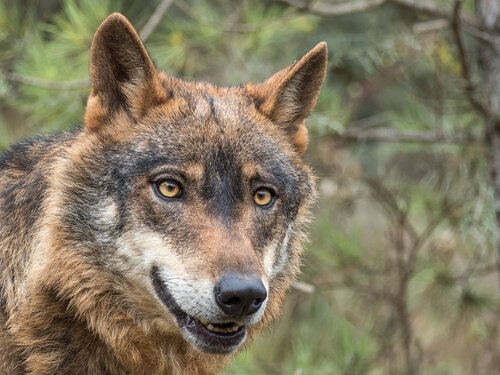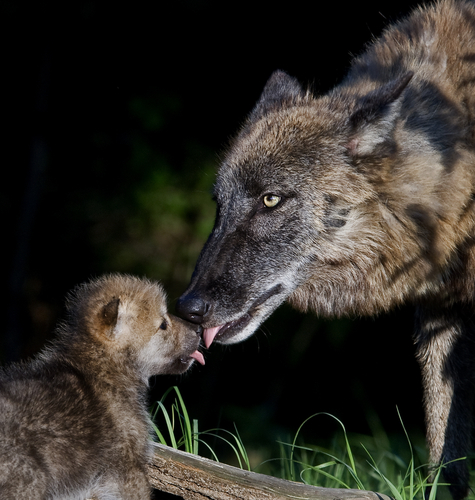Iberian Wolves Are in Danger of Extinction

Iberian wolves, which mostly live in Spain and Portugal, are currently in serious danger of extinction. The Habitats Directive in the European Union protects the species. In Spain, however, conservation initiatives are neither standardized nor uniform. Unfortunately, the initiatives are vital for the sustainability of ecosystems and biodiversity.
Iberian Wolves: Natural Habitats and Relationships with Humans
Canis lupus signatus has long been a predator in the Iberian Peninsula, especially in the northwest. It feeds on large herbivorous prey and is a crucial link in the ecosystem. The common belief is that Iberian wolves are ancestors of dogs.
They live in areas with lower human populations. They also tend to live in places with plenty of prey, such as deer, roe deer and wild boar. Wolves can vary their prey depending on where they live. For example, chickens, cattle and rabbits complement their diets in regions where other animals are scarce.
This causes problems in rural areas that depend on agricultural livestock for economic stability. The most important factor here, however, is the need for humans to learn to coexist better with wolves. This includes protection and prevention mechanisms.
Iberian Wolves Are in Danger of Extinction
The most recent census of the wolf population estimate that Spain is the natural habitat of over 30% of wolves in Europe. Thus, the European Union recognized the species as important to the entire EU. So far, though, there are no uniform regulations in Spanish territories that protect them.

On the contrary, poaching and poisoning exacerbate the Iberian wolf’s situation and move them closer to extinction.
Supporting Data
According to estimates from the last Iberian wolf census (2012-2014), packs have increased 250 to 297 since 2005. However, environmental groups and experts in the subject say the data is not accurate. They believe they didn’t account for important aspects, like the number of individuals in each herd.
Furthermore, the official regional censuses did not all use the same criteria or methodology in the field. Thus, it is difficult to determine the true wolf population in Spain.
An estimated 800 animals are killed every year, a situation mainly linked to poaching. The fact is that wolves are a species that has disappeared in half of the Iberian Peninsula. In 2015, environmental associations recognized it as an endangered species in Andalusia, with only 4 to 56 individual wolves.
Today, the densest population of Iberian wolves is in the municipality of Muelas de los Caballeros, in Zamora. Another 50% live in the north of Castilla y León, and less than 35% live in Galicia. Additionally, there are also still a few packs of wolves in Sierra Morena (Jaén and Cuenca).
Conservation Initiatives
The Ministry of Agriculture has been asking the European Union to consider Iberian wolves as a hunting species throughout its territories.
From the public and private sphere, civic groups are demanding state intervention to protect the species throughout Spain. They also ask that the various sectors that are involved, or feel they have been negatively affected in one way or another, speak up about the issues they are facing.
A couple of the initiatives that Spain is carrying out relating to the issue:
- Presenting concrete proposals to political groups in defense of the Iberian wolf. The ASCEL (Association for the Conservation and Study of Iberian Wolves), Ecologists in Action, Wolf Marley and WWF have developed the proposals.
- A non-legal proposal approved by the Committees on Agriculture, Food and the Environment. This regulation will contribute to the wolves’ conservation and declare them a protected species throughout all Spanish territories.
